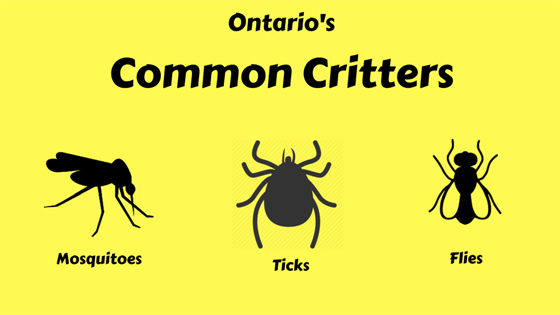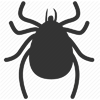
Dr. Jay Keystone says mosquitoes, ticks and flies are three of the most common insects Canadians should look out for this summer. (Graphic: UHN)
For many Canadians, warmer weather means more time outside.
But more time outside means more opportunities to be bitten by insects and other creepy crawlers, whether you're enjoying the sun in the city or at the cottage.
In this three-part series, Dr. Jay Keystone, a physician in the tropical disease unit at Toronto General Hospital, UHN, breaks down how to recognize different bites and what you can do to treat them.
Today, he discusses flies.
Where to find them: Black-flies, deer-flies, stable-flies and horse-flies are all commonly found in Ontario. Watch for flies at the cottage or other rural settings.
What are the symptoms: Dr. Keystone says fly bites are often bigger than mosquito bites, with a dark centre at the site of the bite.
“A black fly bite is usually bigger than a mosquito bite, and they can be quite uncomfortable,” says Dr. Keystone.
“Also black flies are not as bad as other flies, because they have a different biting mechanism, but they can be quite painful.”
There are various different flies that bite in Ontario, but Dr. Keystone says he likely wouldn’t be able to tell the bite of one fly from another.

- Mostly nuisance
- Watch for flies at the cottage or other rural settings
- Common flies include black-flies, deer-flies, stable-flies and horse flies
- Bites are bigger than mosquitoes' and have a dark centre
- Use ice to relieve particularly swollen or paintfull bites
What are the risks: There are virtually no risks associated with fly bites apart from the pain. According to Dr. Keystone, a significant allergic reaction to a fly bite would be very rare.
"These insects are mostly just nuisance," he says.
What you can do: For particularly swollen or painful bites, Dr. Keystone recommends icing the affected area. Wrap ice in a cloth to avoid direct contact with the skin, and hold over the affected area for 10-15 minutes once per hour until the pain subsides.
Dr. Keystone says it's safe to take non-prescription painkillers to reduce the symptoms of a bad bite.
Want to know more? "What's bugging you?" wraps up Thursday when Dr. Keystone discusses ticks.

- Most common along the southern border of Lake Ontario
- Perform tick checks regularly
- Use tweezers to carefully remove ticks, making sure to remove the head
- If you find a tick after 36 hours, you may be at risk for Lyme disease
- Use insect repellent and wear long sleeves to prevent bites

- Found in both urban and rural areas
- Bites cause red, itchy bumps on the skin
- Use insect repellent to prevent bites
- In Ontario some carry West Nile
- If you experience flu-like symptoms see a doctor
